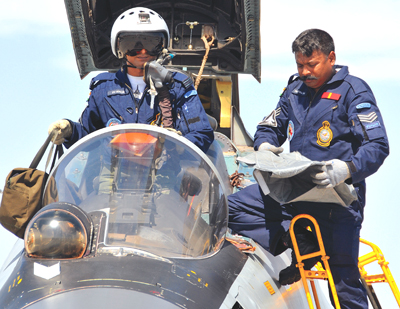INDIAN ARMED FORCES CHIEFS ON OUR RELENTLESS AND FOCUSED PUBLISHING EFFORTS

The insightful articles, inspiring narrations and analytical perspectives presented by the Editorial Team, establish an alluring connect with the reader. My compliments and best wishes to SP Guide Publications.

"Over the past 60 years, the growth of SP Guide Publications has mirrored the rising stature of Indian Navy. Its well-researched and informative magazines on Defence and Aerospace sector have served to shape an educated opinion of our military personnel, policy makers and the public alike. I wish SP's Publication team continued success, fair winds and following seas in all future endeavour!"

Since, its inception in 1964, SP Guide Publications has consistently demonstrated commitment to high-quality journalism in the aerospace and defence sectors, earning a well-deserved reputation as Asia's largest media house in this domain. I wish SP Guide Publications continued success in its pursuit of excellence.
Defining Capabilities

Rapid and ongoing progress in technologies demands the IAF maintain a dynamic outlook in order to keep pace with emerging operational capabilities.
Strengths and weaknesses of any service is defined by the nature of the medium in which it operates. For the air force, the ubiquitous nature of the atmosphere enables intrusion into the other service mediums without interference. As is obvious, for the air force the strengths are defined by speed and reach. Translated to the realm of esoteric concepts, speed defines time and reach defines space. In modern day warfare, control over these two elements would offset to a large degree several other inherent disadvantages of a nation. Classic example is the disadvantage afforded by geography (size and accessibility) being offset by air transportation. Countries with large strategic depth can be rendered vulnerable by the reach of a few well directed fighters and bomber aircraft (control of space). Similarly, quick reaction (due to speed) may partially offset the principle of surprise and turn around difficult situations (control of time).
Operational readiness of the iaf
Proactive scenarios are different from reactive scenarios only because of the marked difference in force readiness times available between the two. Therefore, operational readiness of the IAF has to be seen in a reactive scenario. Modern aircraft and weapon systems have in-built quick reaction times that can afford at least one engagement of the attacker before coming under threat. Good planning coupled with an effective early warning chain can increase this engagement time two to three fold. Key considerations to increase the time further may include use of mutli-tiered systems or an integrated approach. Finally, reduction of the service response time for conventional or unconventional threats is the result of the synergy created by integrated support systems.





